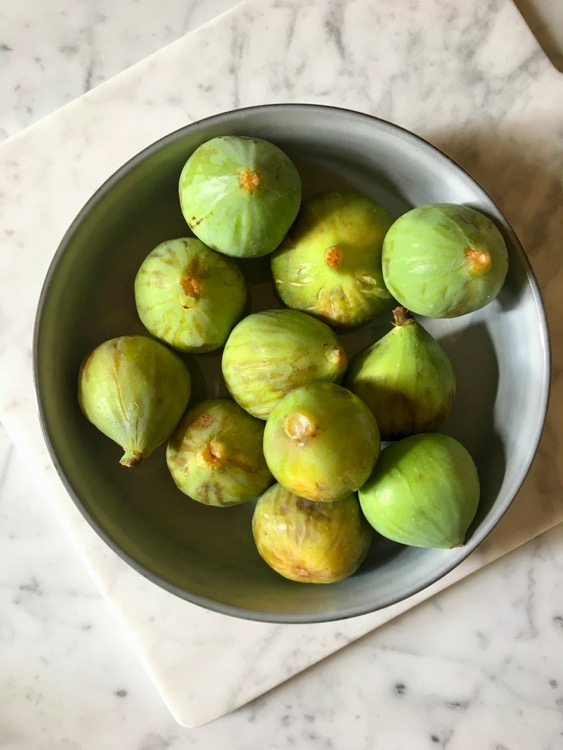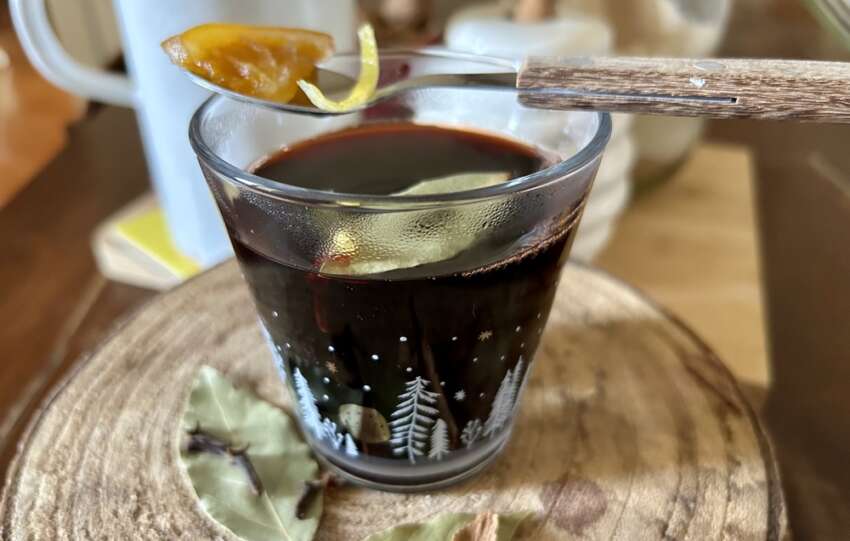I look at the bowl on the table and can’t wait to make the fig crostata, an appointment I look forward to every year in September.

September has always been the month of new beginnings.
And while I indulge in the memory of the beautiful things of summer, with the arrival of September I change step.
In the month that holds the summer by the hand while winking at the autumn, the air becomes fresher and the days get shorter, I am taken by the need to plan my work and develop some new projects.
As if the school bell kept ringing in the corridors calling everyone to their duties. After all, even as the years go by, at the school of life you are always a student and you never stop learning.
Apropos of school of life, after the cataclysm caused by the health emergency, I remembered, more than learned, how precarious our projects are.
At a certain point, we all thought that we could plan and foresee everything, almost as if our lives were ordered pages of an agenda. The slightest setback was a great annoyance. Taken from our hybris we didn’t even consider that something could go wrong.
Personally I do not believe in divine punishment or adverse fate. We had gone a bit further, anyway. The pandemic is the “X factor”, an unforeseen, to say the least, unwieldy event.
After wiping out lives and projects, it continues to create uncertainty.
I am trying to treasure this experience.
Things must not happen in vain.
Maybe it’s too early to look away. Even a year from now seems to be an imponderable time. And perhaps part of the lesson to be learned is right here. Of course, I try to focus on new directions and to understand how the pandemic will change the world I know.
But apart from that, I have chosen a basic approach.
I focus on short-term projects. I spend more time with the people I love. I engage the everyday with work that gives meaning to my days while I open, here and there, little windows on the future.


Little projects to stay well today.
Time for me.
I would like my days to start earlier. Not having a biological alarm clock naturally set on dawn, I look for inspiration in the manifesto dedicated to the importance of the morning and the silent and muffled hours that precede the beginning of the noises of everyday life.
If you think it might interest you, the title of Allan Jenkins’ book is Morning. How to Make Time: A Manifesto (4th ESTATE, London).
Cooking classes.
Following cooking classes is an essential part of my learning path. I was born a home cook, and putting order between the things I learned is as important as learning technical notions and terms. After many courses and a lot of work, I was delighted to join the Professional Association of Italian Chefs.
Waiting to find a baking course suitable for my needs, I want to open again my kitchen to those who want to cook with me.

A fig crostata with pastry cream.
Also, this cake is one of my September projects.
How much I love the taste of this crostata I make every year.
The dough is traditional and, above all, thin. In this way, it is a sort of edible box, slightly crunchy, of the principal ingredients of this dessert, both soft, which are figs and pastry cream.
After having made the sweet and enjoyed a slice, I felt the benefit of having already put one of the goals of September on the net. Planning and carrying out a project, even a small one, has improved my mood and certainly the day.
The well-being effect is guaranteed until the last bite of the cake.
Good new beginning to what you want, Monica
Blog’s Links.
Many of my first memories of cooking are linked to the custard. It is a basic recipe that is used to make many cakes and, I think, it’s a simple a dessert that needs to be rediscovered. Below you will find the procedure but if you want to read some tricks and tips seasoned with a handful of memories, you can click on the link to the Italian Homemade Pastry Cream Recipe (which I make with flour, which I make with flour, as my grandma made and as Italian master pastry chef Gino Fabbri taught me).
You will find the list of beautiful things I will remember this summer in the post with the recipe of the peach amaretti cake.
Keep in Touch
If you like, you can follow me on Instagram, Pinterest and Facebook.

Food Tips
With a mold of 14cm diameter, you will have leftovers of shortcrust pastry that you can use to make cookies. I leave you with a very quick idea to make: roll out the shortbread, add chocolate chips, close the shortbread on itself, press with your hands or a rolling pin, cut into squares and bake in the preheated oven. Or wrap the dough in film and store in the freezer for later use.
Choose a good fig jam or cook about 20 figs, apart from those used for decoration, with a spoonful of sugar for about ten minutes until soft and creamy.
Fresh Fig Crostata with Pastry Cream Recipe
serves 4-6
mould, diameter 14cm
Ingredients
For the base:
120 g flour 00
60 g brown sugar
70 g butter chunks, for refrigerator
a small egg
just a pinch of yeast and a pinch of salt
one teaspoon of natural vanilla extract
For the pastry cream
25 g flour
50 g sugar
2 yolks
250 ml milk
pinch of salt
about 15 ripe figs, little ones
250 g fig jam or fresh figs peeled and cooked for two minutes in a non-stick frying pan
Directions
Shortcrust Dough.
Mix the dry ingredients in a bowl, add egg and cold butter chunks and knead the ingredients until smooth and compact.
Wrap in cling film and leave to rest in the fridge for 30 minutes to 1 hour. The dough should be firm and compact, allowing time for the butter to firm up again.
Pastry Cream.
In a saucepan, mix the egg yolks and sugar with a hand whisk.
Add the sifted flour to the eggs and sugar, stirring with a whisk and then slowly pour half a liter of whole milk – warm or room temperature – into the mixture (I never heat it, I always use room temperature milk and, sometimes, also cold).
Stirring constantly, bring mixture to a boil over medium-low heat.
Once mixture begins to separate from sides of pan, remove it from heat, cover the surface of the hot custard with cling film in contact with the cream or brush a piece of butter over the still warm surface of the cream.
Figs.
Choose figs of the same size to decorate the cake.
Gently wash the fruit, remove the skin and open each fig in half. I know that peeling figs will break a little, especially if they are very ripe (and I suggest you choose ripely). The same, I prefer that the peel don’t touch the top of the cake. Seeing a guest disassembling the cake to remove the peel, I suppose it isn’t what you hope.
Make the crostata!
On a floured work surface or between two sheets of parchment paper, roll out the dough to about 4-5 mm thick. Work it quickly so dough remains cold.
Cover the mould with wet and squeezed baking paper, transfer the dough to the pan gently.
Option 1.
Prick the base of the dough all over with a fork, then line with parchment paper and fill with baking beans. Bake blind in preheated oven (180C degrees) for 10 minutes. Remove the paper and beans and bake for a further 5 until the pastry is golden. Leave the pastry case to cool slightly before filling.
Option 2.
Cover the bottom of the base with a layer of fig jam. Add the cream until it fills the crostata (as I did in the photos below the recipe), and bake in a preheated oven at 180C degrees for about 30 minutes. Check and when the cream begins to take color, remove from the oven.
Leave to cool before to decorate with fresh figs.






